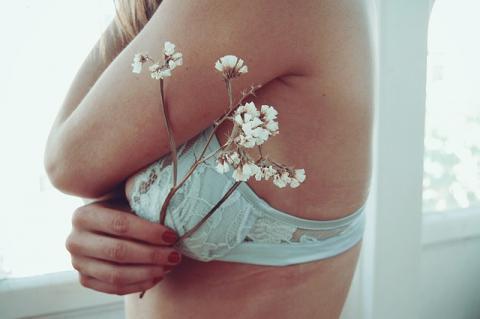
Ladies: although our beautiful breasts come in many different shapes and sizes, we all need to keep them as healthy as we can. Performing regular breast exams can help ensure your breasts are healthy and cancer-free. Along with performing regular exams, you can also help to promote breast wellness with certain herbs.
Check out these 10 herbs for boosting breast health!
Cat’s Claw (Uncaria tomentosa):
Cat’s claw was used by indigenous people to treat many kinds of body ailments. This yellow-flowered herb gets its name from its catlike thorns. It is a popular medicinal herb used for breast cancer prevention and building red blood cells for naturally boosting the immune system. Cat’s claw is considered to be well-tolerated by most and considered non-toxic.
Fennel (Foeniculum vulgare):
The perennial herb has many great uses and medicinal purposes. Out of many of its uses, fennel is considered a food for preventing cancer and building healthy breast tissue. Fennel is also used to naturally enhance breasts as well. If you are a woman who is pregnant or nursing, you should not consume fennel or fennel seed because it can stimulate the uterus.
Marigold (Calendula officinalis):
Only the flower heads of this herb are usually used medicinally. Marigold flowers contain an antioxidant known as lutein. Lutein has been associated with decreasing the number of tumors within breasts and preventing new cancer cells from developing. The flower can be made into an ointment for rubbing on the nipples to help heal and relieve cracked, irritated skin due to nursing. In addition to this, it has also been used for treating mastitis during or after breastfeeding.
Evening Primrose (Oenothera):
Evening primrose is often used for relieving breast pain and for reducing breast inflammation. The herb has also been known to help in firming and enhancing breasts naturally as well. Taking this herb in supplement form or in the form of oil are two popular ways to gain the benefits of evening primrose.
Basil (Ocimum basilicum):
Basil is sometimes called “king of herbs”, and I definitely believe it is very deserving of the name. The different varieties such as Sweet or Holy Basil have been used as herbal remedies for breast cancer, and basil is also said to prevent the growth of new and existing, cancerous tumors. There are many ways to use this herb such as in tea, food, or in an essential oil.
Milk Thistle (Silybum marianum):
This tall prickly flower has a long history of medicinal and therapeutic uses. Many mothers choose this herb when nursing in order to increase their milk supply. Milk thistle is taken to help strengthen the immune system and heal the liver. You can usually take this herb in tea, tincture, or in capsule form.
Damiana (Turnera diffusa):
Damiana comes from a small flowering shrub that is usually sold as an herbal supplement. The aromatic herb has been known to assist in improving blood circulation in the breasts, breast enlargement, and improving gland activity. Something important I should note about this particular herb is that it will boost your sex-drive, and it is primarily used for increasing sexual desire.
Dandelion (Taraxacum officinale):
Dandelion is commonly used to help heal fibrocystic breast disease (FBD), which is a common disorder that affects many premenopausal women. The herb can be taken internally or applied as a poultice. The yellow-flowered herb has been used for over 1,000 years in treating breast cancer and inflammation. Nursing mothers have used this herb for increasing their milk production as well.
Although these herbs are a great way to help you naturally maintain your breast health, they are still considered medicine, which means people react to them differently. Before using these or any kind of herbs, I highly recommend consulting a certified herbalist beforehand.
A healthy diet, exercise, and adequate sleep are all important factors that contribute to keeping your breasts healthy. Knowing your body, completing regular breast exams, and checking on your family’s past medical history will help you to detect breast cancer early. For those who are unsure of how to perform a correct self-examination, the national breast cancer website gives you great, easy step-by-step instructions.








